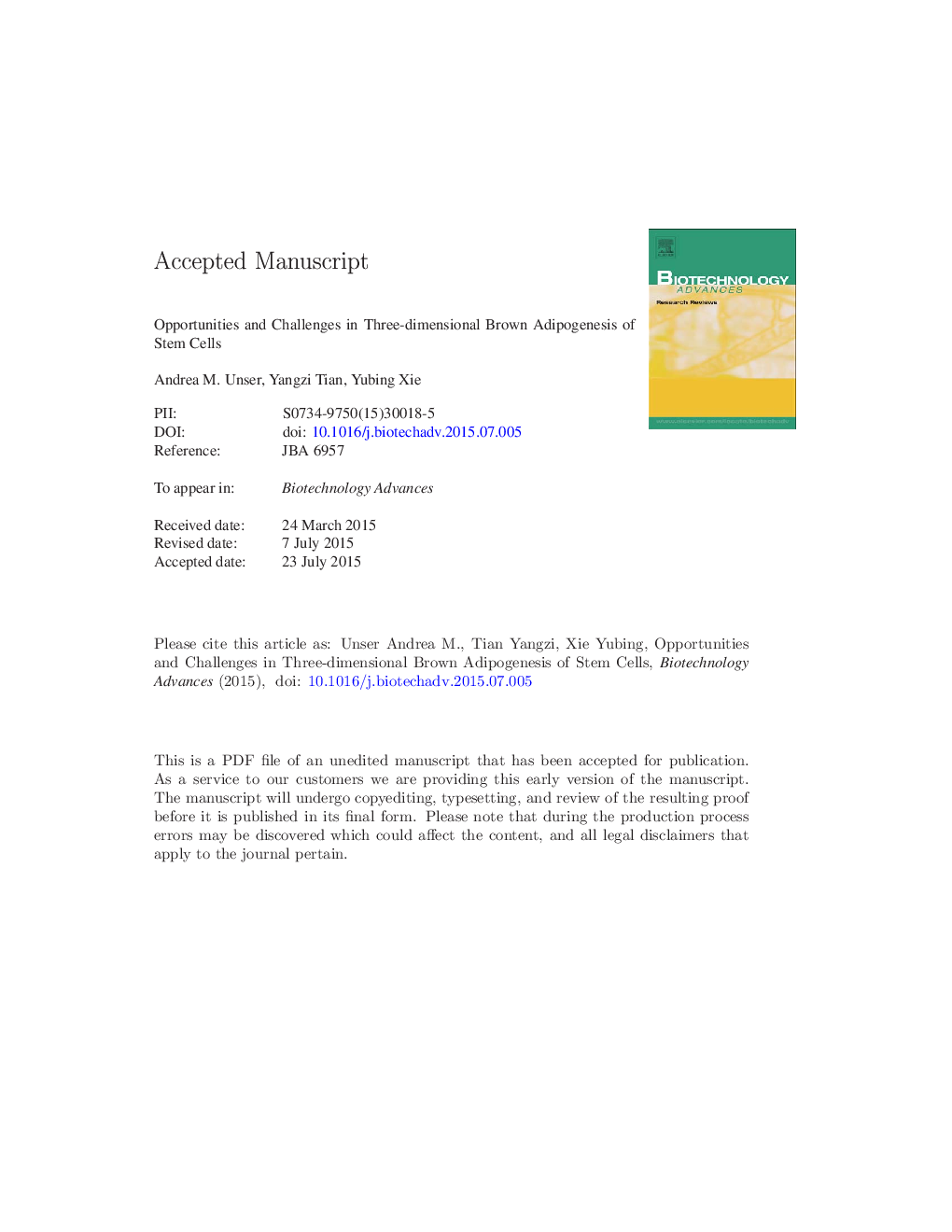| Article ID | Journal | Published Year | Pages | File Type |
|---|---|---|---|---|
| 10231475 | Biotechnology Advances | 2015 | 54 Pages |
Abstract
The formation of brown adipose tissue (BAT) via brown adipogenesis has become a notable process due to its ability to expend energy as heat with implications in the treatment of metabolic disorders and obesity. With the advent of complexity within white adipose tissue (WAT) along with inducible brown adipocytes (also known as brite and beige), there has been a surge in deciphering adipocyte biology as well as in vivo adipogenic microenvironments. A therapeutic outcome would benefit from understanding early events in brown adipogenesis, which can be accomplished by studying cellular differentiation. Pluripotent stem cells are an efficient model for differentiation and have been directed towards both white adipogenic and brown adipogenic lineages. The stem cell microenvironment greatly contributes to terminal cell fate and as such, has been mimicked extensively by various polymers including those that can form 3D hydrogel constructs capable of biochemical and/or mechanical modifications and modulations. Using bioengineering approaches towards the creation of 3D cell culture arrangements is more beneficial than traditional 2D culture in that it better recapitulates the native tissue biochemically and biomechanically. In addition, such an approach could potentially protect the tissue formed from necrosis and allow for more efficient implantation. In this review, we highlight the promise of brown adipocytes with a focus on brown adipogenic differentiation of stem cells using bioengineering approaches, along with potential challenges and opportunities that arise when considering the energy expenditure of BAT for prospective therapeutics.
Keywords
ESCsKSRPCLMPcshMSCsMSCsSVFPGC1αCOX-2ECMhESCsFGFBATfluorodeoxyglucoseIPSCsPAI-1FDGEBsIBMXAFMPVAPPAR γstromal-vascular fractionKCNK3PRDM16Myf5ASCsFoxc2MTUS1Poly caprolactone3-isobutyl-1-methylxanthineC/EBPcAMPhASCsPET–CTUcp1Brown adipocytesCyclic adenosine monophosphateAdipogenesisall-trans-retinoic acidMRIEnergyWhite adipose tissuebrown adipose tissueMagnetic resonance imagingDifferentiationPositron emission tomography–computed tomographyembryoid bodiesknockout serum replacementPR domain containing 16Stem cellshuman embryonic stem cellsAdipose-derived stem cellshuman adipose-derived stem cellsMesenchymal stem cellshuman mesenchymal stem cellsInduced pluripotent stem cellsEmbryonic stem cellsMesenchymal progenitor cellsCyclooxygenase-2body mass indexBMIMyogenic Factor 5fibroblast growth factorBasic fibroblast growth factors3D cultureExtracellular matrixBMPObesityplasminogen activator inhibitor 1Tissue engineeringatomic force microscopyCCAAT/enhancer-binding proteinuncoupling protein 1Bone morphogenetic proteinPoly (vinyl alcohol)brown fatWATperoxisome proliferator-activated receptor γ
Related Topics
Physical Sciences and Engineering
Chemical Engineering
Bioengineering
Authors
Andrea M. Unser, Yangzi Tian, Yubing Xie,
